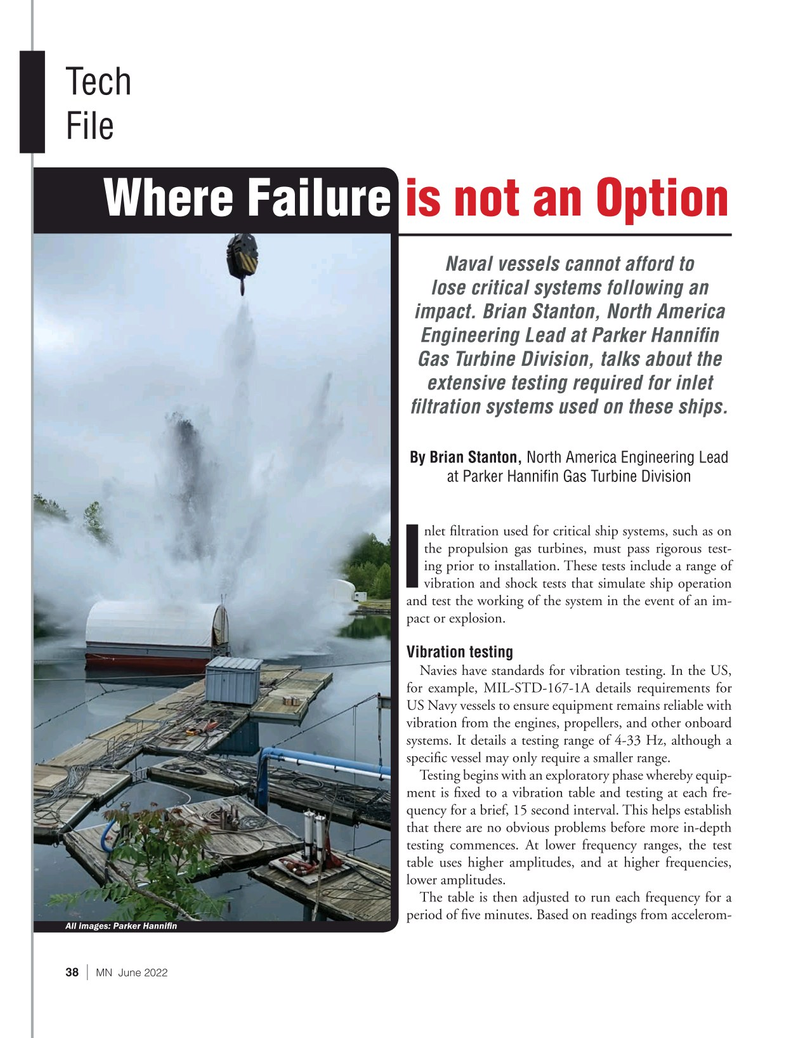
Page 38: of Marine News Magazine (June 2022)
Combat & Patrol Craft Annua
Read this page in Pdf, Flash or Html5 edition of June 2022 Marine News Magazine
Tech
File
Where Failure is not an Option
Naval vessels cannot afford to lose critical systems following an impact. Brian Stanton, North America
Engineering Lead at Parker Hanni? n
Gas Turbine Division, talks about the extensive testing required for inlet ? ltration systems used on these ships.
By Brian Stanton, North America Engineering Lead at Parker Hanni? n Gas Turbine Division nlet ? ltration used for critical ship systems, such as on the propulsion gas turbines, must pass rigorous test- ing prior to installation. These tests include a range of vibration and shock tests that simulate ship operation
I and test the working of the system in the event of an im- pact or explosion.
Vibration testing
Navies have standards for vibration testing. In the US, for example, MIL-STD-167-1A details requirements for
US Navy vessels to ensure equipment remains reliable with vibration from the engines, propellers, and other onboard systems. It details a testing range of 4-33 Hz, although a speci? c vessel may only require a smaller range.
Testing begins with an exploratory phase whereby equip- ment is ? xed to a vibration table and testing at each fre- quency for a brief, 15 second interval. This helps establish that there are no obvious problems before more in-depth testing commences. At lower frequency ranges, the test table uses higher amplitudes, and at higher frequencies, lower amplitudes.
The table is then adjusted to run each frequency for a period of ? ve minutes. Based on readings from accelerom-
All images: Parker Hanni? n 38 | MN June 2022

 37
37

 39
39
